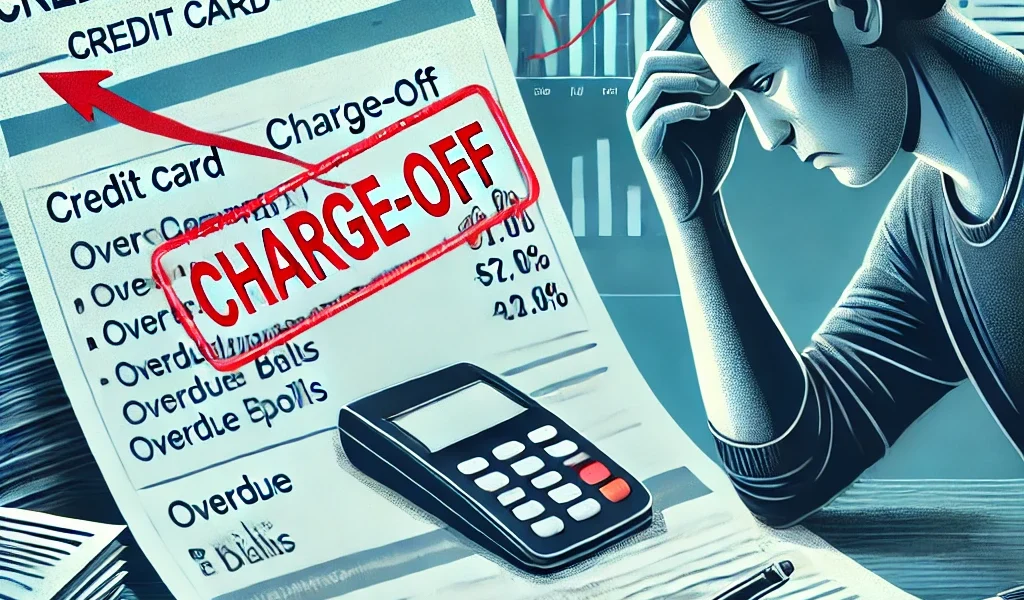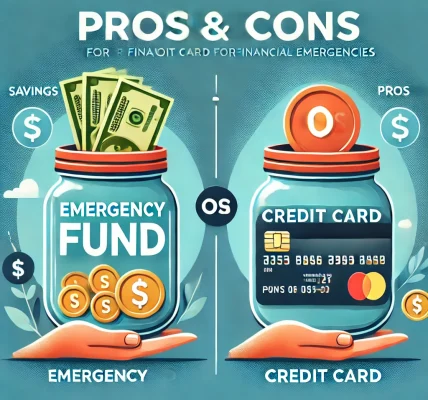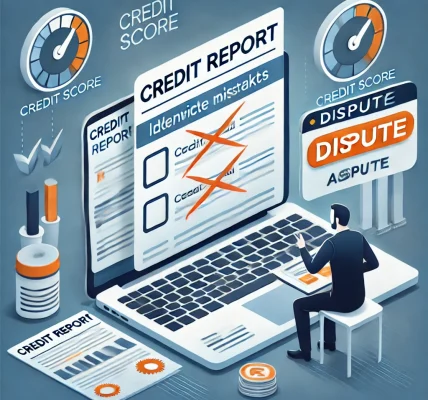A credit card charge-off can be a serious financial setback, but understanding what it is and how to remove it from your credit report can help you regain control of your finances. If you’ve seen a charge-off listed on your credit report, don’t panic—there are steps you can take to address it and improve your credit score.
In this guide, we’ll cover everything you need to know about credit card charge-offs, including their impact, ways to remove them, and best practices for preventing them in the future.
1. What Is a Credit Card Charge-Off?
A credit card charge-off occurs when a creditor deems your account as uncollectible due to prolonged non-payment. Typically, after 180 days (or six months) of missed payments, the creditor writes off the debt as a business loss and reports it as a charge-off to the credit bureaus.
Key Facts About Charge-Offs:
- A charge-off does not mean your debt is forgiven.
- The lender may still attempt to collect the debt or sell it to a collection agency.
- Charge-offs remain on your credit report for seven years from the date of the first missed payment.
- They can significantly lower your credit score, making it difficult to obtain new credit.
2. How Does a Charge-Off Affect Your Credit Score?
A charge-off has a severe negative impact on your credit score because it signals to lenders that you have failed to meet your financial obligations. Here’s how it affects different aspects of your credit profile:
- Payment History (35% of your score): Late payments and charge-offs damage this critical factor.
- Credit Utilization (30%): Your available credit decreases if the account is closed.
- Length of Credit History (15%): A closed account shortens your average account age.
- New Credit (10%): Getting approved for new credit will be more difficult.
- Credit Mix (10%): A charge-off disrupts the balance of active credit accounts.
How Much Can a Charge-Off Lower Your Score?
Depending on your existing credit profile, a charge-off can drop your score by 50-150 points or more.
3. Steps to Remove a Charge-Off from Your Credit Report
Although a charge-off typically remains on your credit report for seven years, there are ways to potentially remove it or reduce its impact:
A) Dispute Incorrect Charge-Offs
If the charge-off is inaccurate or incorrect, you can dispute it with the credit bureaus:
- Request a Copy of Your Credit Report – Obtain reports from Equifax, Experian, and TransUnion.
- Review the Charge-Off Details – Check for errors such as incorrect dates, amounts, or mistaken identity.
- File a Dispute – Submit a dispute to the credit bureaus online, by mail, or over the phone.
- Wait for Investigation – The credit bureau has 30 days to investigate and respond.
B) Negotiate a Pay-for-Delete Agreement
Some creditors may agree to remove the charge-off in exchange for full or partial payment. Here’s how to approach it:
- Contact the Creditor – Call or write a letter requesting a “pay-for-delete” arrangement.
- Negotiate Terms – Offer to pay the full balance or a settled amount in exchange for the removal of the charge-off.
- Get It in Writing – Before making any payment, ensure the creditor provides a written agreement.
- Make the Payment – Once the agreement is secured, pay the agreed-upon amount.
C) Settle the Debt and Request an Update
If the creditor refuses to remove the charge-off, settling the debt can still help:
- A settled charge-off looks better than an unpaid charge-off on your credit report.
- After paying, request that the status be updated to “Paid” or “Settled”.
D) Wait It Out and Rebuild Credit
If removal isn’t possible, focus on rebuilding your credit:
- Make on-time payments on all other accounts.
- Reduce your credit utilization (keep balances below 30% of your limit).
- Avoid opening too many new accounts at once.
- Consider a secured credit card to rebuild your credit profile.
4. How to Prevent Charge-Offs in the Future
A) Make at Least the Minimum Payment
Always pay at least the minimum amount due to avoid late fees and negative marks on your report.
B) Set Up Auto-Pay or Reminders
Use automatic payments or set reminders to ensure you never miss a due date.
C) Contact Creditors If You’re Struggling
If you’re experiencing financial hardship, call your creditor and ask for:
- A payment plan with lower monthly payments.
- A temporary hardship program with reduced interest rates.
D) Keep Your Credit Utilization Low
Try to keep your credit utilization below 30% to maintain a healthy credit score.
E) Monitor Your Credit Report Regularly
Check your credit report for errors or signs of fraudulent activity and dispute them immediately.
5. Frequently Asked Questions (FAQs)
Q1: Can I Remove a Charge-Off Without Paying?
It is difficult, but if the charge-off contains errors, you may get it removed through a credit dispute.
Q2: Can I Negotiate a Charge-Off Removal Directly with the Lender?
Yes, some lenders may agree to remove the charge-off if you pay the debt in full or settle for an agreed amount.
Q3: How Long Does It Take to Remove a Charge-Off?
- A disputed charge-off may be removed within 30-45 days if found inaccurate.
- A pay-for-delete agreement can take a few weeks to months to process.
Q4: Will a Charge-Off Stop Me From Getting a Loan?
A charge-off can significantly reduce your chances of loan approval, especially for mortgages, auto loans, or personal loans.
Q5: Should I Hire a Credit Repair Company?
While credit repair companies can help, be cautious of scams. You can dispute errors and negotiate charge-off removals on your own for free.
6. Final Thoughts
A charge-off can be a financial burden, but it doesn’t have to ruin your credit forever. By disputing errors, negotiating settlements, and rebuilding your credit, you can minimize its impact and restore your financial health.




